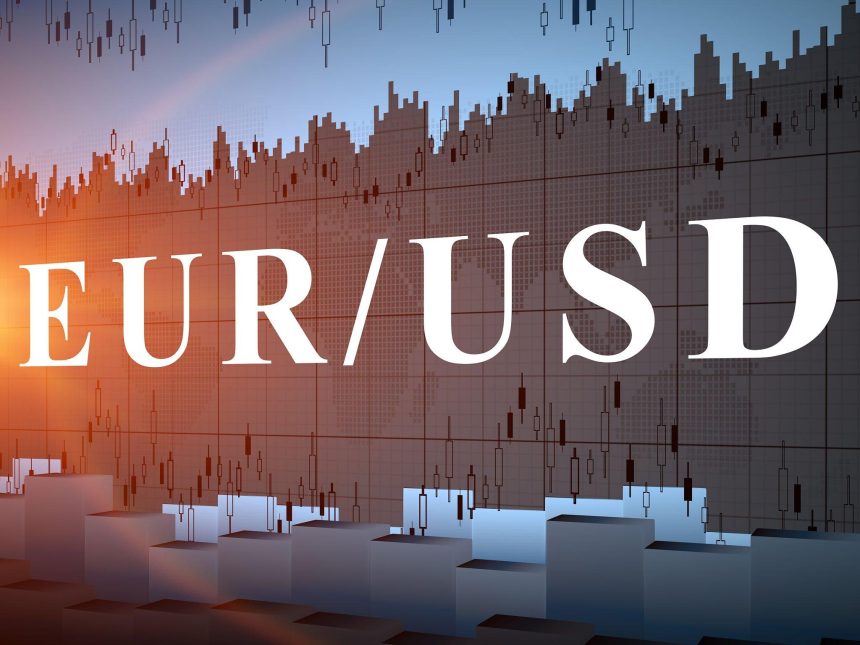EURUSD rises to around 1.0750 as the US dollar falls ahead of key US economic data.
EURUSD rises to 1.0750 during Friday’s European session. The major currency pair strengthens as the US Dollar (USD) falls due to sluggish Q1 nonfarm productivity growth and the Federal Reserve (Fed) provides less hawkish interest rate outlook than expected.
The US Dollar Index (DXY). Which measures the value of the US dollar against six major currencies, is trading at approximately 105.20, a three-week low. Still, investors Should be cautious regarding EURUSD longs. As market mood could turn sour depending on the outcome of two significant data points. The United States Nonfarm Payrolls (NFP) and the ISM Services Purchasing Managers Index (PMI) data for April, both of which are due in the New York session.
Traders have boosted their wagers that the Federal Reserve (Fed) would begin to decrease interest rates.
These US economic indicators will provide new information about the state of the labor market and the health of the services sector, two critical factors that the Fed considers when setting interest rates. Traders have boosted their wagers that the Federal Reserve (Fed) would begin to decrease interest rates at its September meeting. These views were raised after Federal Reserve Chair Jerome Powell sounded slightly less aggressive than expected in the most recent monetary Policy declaration and press conference.
Jerome Powell stated that while his projection for inflation to decline this year remains unchanged, “my confidence in that is lower than it was.” According to Reuters, he also stated that inflation “is still too high,” and that “further progress in bringing it down is not assured and the path forward is uncertain”. The Fed also chose to lower the pace of balance-sheet runoff. Indicating that the US central bank is leaning toward policy normalization this year.
Daily Market movers: EURUSD climbs amid strong ECB rate cut predictions for June.
The EURUSD hits a new four-day high of 1.0750 as the US dollar falls sharply. The strength The major currency pair may fizzle out amid uncertainties. Ahead of the US NFP and strong anticipation that the European Central Bank (ECB) would begin lowering interest rates in June.
The US NFP report will have a substantial impact on market assumptions about the Fed’s interest rate future. The consensus is that fresh payrolls were at 243K. Which is lower than the previous number of 303K. The unemployment rate is predicted to hold constant at 3.8%.
Investors will also be looking at the Average Hourly Earnings data. Which will provide new insights into the inflation outlook. Monthly pay growth is expected to have increased by 0.3%. During the same time period, yearly pay growth is expected to fall to 4.0% from 4.1%.
Overall, better pay growth and strong labor demand in strong consumer spending momentum. Which eventually increases inflationary pressures. This circumstance would be beneficial to the US dollar and bond rates. But would likely weigh on the EURUSD pair, since it would allow the Fed to retain a restrictive interest rate environment for a longer period.
The ECB is largely expected to begin lowering interest rates in June.
Investors will also pay attention to the US ISM Services PMI data, a survey. That assesses the performance of the services sector. Which accounts for two-thirds of the GDP. The Services PMI is expected to rise to 52.0 from the previous figure of 51.4. Investors will also look at subcomponents such as the New Orders Index and the Prices Paid Index. Which measure the state of new business and service price inflation, respectively.
Regarding the Eurozone, the European Central Bank is largely expected to lower interest rates in June. Providing inflation does not surprise, as price growth in the Eurozone is on track to revert to the intended goal of 2%. The prospects for the ECB to achieve a “soft landing” have strengthened as the old continent’s economy expanded by 0.3% in the first quarter of this year, exceeding the consensus of 0.1%.









